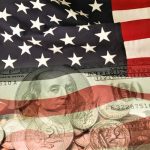Market Analytics and Technical Considerations
Key Points
Three major US benchmark indices finished the regular session sharply lower this morning after protests in major Chinese cities against strict COVID-19 curbs raised concerns about economic growth and Federal Reserve officials reiterated a stance for rates to remain higher for longer
This morning, the December S&P 500 futures are trending up +0.31%. The falls in the three major U.S. stock indices were mostly caused by declines in the Oil & Gas, Basic Materials, and Technology sectors.
Following reports that the tech giant may experience a production shortfall of six million higher-end models as a result of worker unrest at the world’s largest iPhone factory in China, Apple Inc. (AAPL) shares fell -2.63% during Monday’s trading session.
These demonstrations merely demonstrate that this is a moving target—where will China continue to attempt to effectively limit COVID’s spread? We believe that COVID and China’s policy in 2023 are two of the most important factors that will affect investors and stock prices.
Markets, on the other hand, were “underpricing risk that the FOMC will have to be more aggressive rather than less aggressive to tame the substantial inflation in the U.S.,” according to Federal Reserve Bank of St. Louis President James Bullard on Monday. In addition, Federal Reserve Bank of New York President John Williams stated that excessive inflation necessitated further interest rate increases and their continuation into the following year.
In the meantime, U.S. rate futures have priced in a 69.9% chance of a rate increase of 50 basis points and a 30.1% chance of a 75 basis point increase at the monetary policy meeting in December.
Today, the U.S. CB Consumer Confidence data in a few hours is the focus of all attention.
The CB Consumer Confidence Index is expected to reach 100.0 in November, up from 102.5 in the previous month, according to economists’ average predictions.
Additionally, the U.S. S&P/CS HPI Composite – 20 n.s.a. is likely to be investors’ primary focus.data, which in August was 13.1% year-over-year.T he September figure is anticipated by economists to be 10.8% y/y.
Additionally, data on the US House Price Index will be reported today .In September, this number is expected to be -1.2% m/m, down from the previous value of -0.7% m/m.
Rates on 10-year bonds in the United States currently stand at 3.668%, a decrease of -0.92%.
This morning, market participants digested the most recent Spanish inflation numbers and new Chinese stimulus measures. As a result, the Euro Stoxx 50 futures are up +0.10%.In addition, ahead of Wednesday’s preliminary Eurozone inflation data for November.
European investors will focus on Germany’s inflation reading, which is due later in the session. On Monday, Christine Lagarde, president of the European Central Bank, stated that inflation in the Eurozone had not yet reached its peak and that it could end up even higher than currently anticipated, pointing to upcoming interest rate increases.
Today, data on the GDP of Switzerland, the CPI (preliminary) of Spain, the HICP (preliminary) of Spain, the Eurozone Business and Consumer Survey, and Eurozone Consumer Confidence were made available.
Compared to expectations of +0.3% q/q and +1.0% y/y, Switzerland’s third-quarter GDP was reported at +0.2% q/q and +0.5% y/y.
In contrast to expectations of +7.4% y/y, the Spanish November CPI was only +6.8% y/y.
In contrast to expectations of +7.5% y/y, the Spanish November HICP came in at +6.6% y/y.
The November Business and Consumer Survey for the Eurozone came in at 93.7, exceeding expectations of 93.5.
In line with expectations, consumer confidence in the Eurozone in November was -23.9.
Today, rumors of a China reopening sent the majority of Asian stock markets soaring. The Nikkei 225 Stock Index (NIK) in Japan closed down -0.48%, while the Shanghai Composite Index (SHCOMP) in China closed up +2.31%.
After Beijing implemented additional stimulus measures, the Shanghai Composite closed higher today, and social media rumors suggested that the Chinese government was considering reducing its zero-COVID strategy. The tales recommended that Beijing would report a finish to the zero-Coronavirus strategy by zeroing in on the low casualty pace of late flare-ups.
Also, the government lifted a ban on equity financing in the Chinese property sector, which opened up a new source of funding for the troubled sector, causing property stocks to soar today. Consequently, markets were able to look past concerns regarding an escalation of anti-government protests thanks to optimism regarding the new stimulus measures and rumors of China’s reopening.
As a result of disappointing retail sales data, Japan’s Nikkei 225 Stock Index closed lower today, signaling further economic headwinds for the country. Unwaveringly adhering to COVID-0 will increasingly sound like a house meant for living in, not speculation.
The Power, Shipbuilding, and Steel sectors’ losses fueled the index’s downward momentum. The implied volatility of Nikkei 225 options is taken into account in the Nikkei Volatility, which ended the day at 18.53, up 5.95 percent.
In contrast to expectations of 5.0% y/y, October’s Japanese retail sales were only 4.3% y/y.









